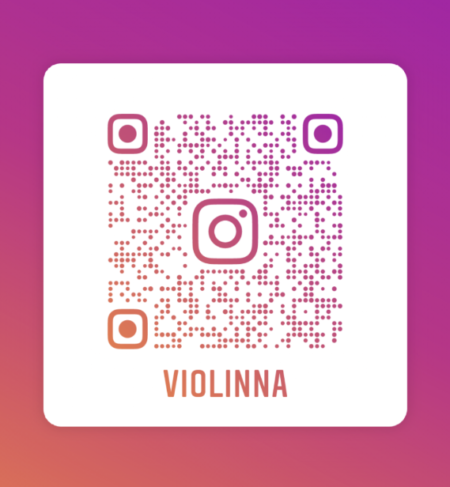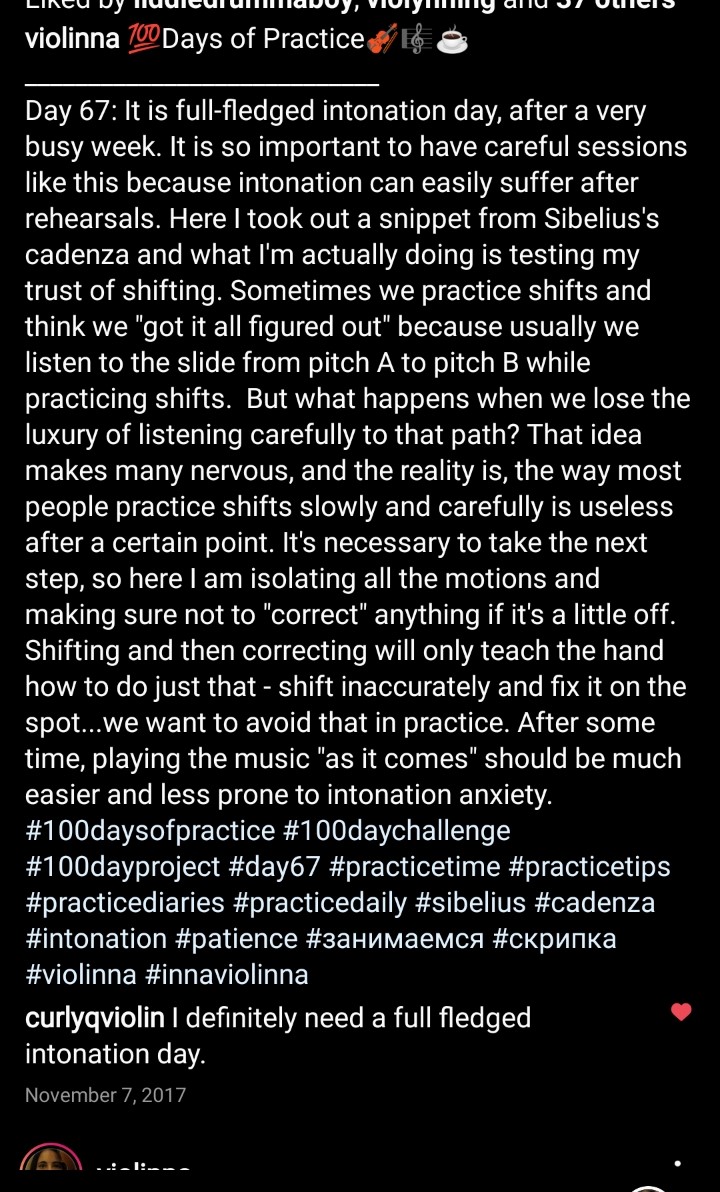
“Why do people post videos of their works ‘in progress’ and not wait until they’re ready for performance?”
This is an excellent question and an important topic that musicians are discussing more frequently on social media. Here are a few reasons why I share my own works in progress and how it benefits the musical and personal growth for both myself and my musical community.
Being Vulnerable
I started sharing practice videos of myself on Instagram in 2017 as part of my first “100-day practice challenge.” This is a continuously trending challenge that was inspired by Hilary Hahn’s initiative to post short videos of herself practicing in public for 100 consecutive days. Initially, my plan was to use this challenge as an opportunity to practice being vulnerable and become a little more “comfortable” in a very uncomfortable situation. I was a couple weeks away from taking my first orchestra audition. Almost anyone who’s ever taken a blind audition can attest to how unusual and awkward it can feel to play for strangers you can’t even see. Unfortunately, this audition was in Florida and was scheduled on the same day Hurricane Irma would make landfall, so I canceled the flight at the last minute. Even with the minor setback, I kept posting videos and completed the 100-days…okay, I took 3 days off in the middle, which broke the streak, but that’s not important.
Putting myself out there felt very uncomfortable, especially in the beginning. However, knowing that I was doing the challenge alongside others helped me continue and share more of myself and my thought process. This, in turn, allowed other musicians in the community to do the same. Being vulnerable and sharing my practice journey helped me be more confident: I spent less time questioning my own musical integrity, started practicing more from a place of curiosity, and made some gains technically and artistically.
Encourage Others
There is a lot of power in community. Other musicians on Instagram saw that they weren’t alone when I shared moments of struggle or getting stuck, and then what strategies I used to approach the problems. It’s so easy to use social media and share “final results” and other highlights; It’s the uphill climb and the process toward a goal that people are afraid of sharing. Maybe in an older tradition there is some kind of stigma around this – I say it’s time to get rid of this stigma.
To Learn & To Teach
Self-recording is a very important learning tool. It’s one of the most effective ways of being one’s own teacher. I shared my “self-teaching” reflections as tips in some of my Instagram captions, such as this one:
Typing up some of the internal dialogue and thoughts made me more conscious of which self-criticisms were helpful and which were potentially harmful. What gets written gets remembered, and it might indirectly help someone else. Writing reflections in public on Instagram helped me stay more accountable and keep working, even during difficult moments or when I felt lazy.
There is no “finished” product
This is something I try to teach my own private students, and I hope that others can understand it along the way – a piece is never “finished.” An important key to artistic growth is observing and tweaking small details. Of course, this ultimately has to be balanced by creating deadlines to present something and move forward. Being a perfectionist can cause one to procrastinate with no end in sight. By embracing and accepting the fact that nothing is ever “done,” we can become a little more comfortable in sharing our music. This isn’t to say to put less effort into posting something of quality. The idea is to enjoy the journey and help others enjoy it too.
With visual art, it’s much easier to enjoy a step-by-step process and watch how a painting evolves from its initial sketches to the final presented product. With music, this is much more challenging to do, partly because the visual aspect is removed. The old “layer” isn’t saved waiting for you to pick up exactly where you left off. Anything saved for retention goes to the subconscious mind. If we save short audio (or video) recordings from practice sessions of the same piece over several consecutive months, we can listen to them back to back, allowing us to hear the progress.
I’m a firm believer that the process is a huge part of making art. Learning and growing boosts our livelihoods even more when we share parts of the journey with others.

